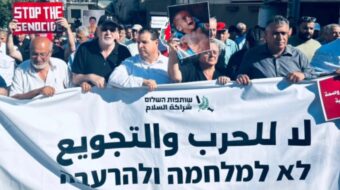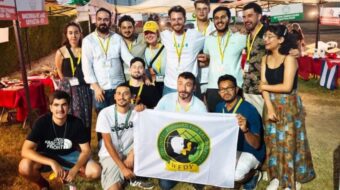The analysis published by Seymour Hersh in The New Yorker recently [“Preparing the battlefield: The Bush administration steps up its secret moves against Iran”] is revealing in a number of respects regarding the position of the Bush administration in relation to Iran. The article also provides some insight into the position of some leading Democrats, suggesting that the election of a Democratic president for 2009 may not be the panacea some have suggested, in terms of the prospects for a change in foreign policy towards Iran.
Hersh initially outlines the recent contribution of an additional $400 million for covert operations against Iran. U.S. Special Operations forces have been conducting covert operations in Iran since last year but the latest injection of cash heralds a major escalation of such activities. The aim of the additional funds, according to sources cited by Hersh, is to focus on “undermining Iran’s nuclear ambitions and trying to undermine the government through regime change.”
While such action is routinely expected of the Bush regime it is interesting to note that authorization could not be cleared without the agreement of key Democrats as Congress has been under Democratic control since 2006. The authorization also came at a time when the National Intelligence Estimate, released in December 2007, suggested that Iran had halted work on nuclear weapons in 2003. This was not an outcome that the Bush administration welcomed or sought to publicize widely.
The tension between the administration and the intelligence community is mirrored by tension with the military over appropriate command structures for conducting U.S. operations. Hersh reports that the Joint Chiefs of Staff were resisting administration pressure to undertake a military strike against Iran. Hersh quotes a well-placed Pentagon source as suggesting that “at least 10 senior flag and general officers, including combatant commanders, have weighed in on that issue.”
Such divisions in U.S. ruling circles do not necessarily reflect a desire to step back from asserting U.S. hegemony in the region. The commitment to keeping all options on the table remains, and the use of covert operations to destabilize the region is not one that is contested in principle. Nevertheless, Hersh identifies a tactical division in the United States which could have unintended consequences if not resolved.
For example, the blurring of lines between clandestine military activities and covert CIA operations mean that presidential accountability to Congress is unclear. The president’s constitutional right to command combat forces in the field means that decisions can be taken without congressional “interference.” As Hersh points out, “There is a growing realization among some legislators that the Bush administration, in recent years, has conflated what is an intelligence operation and what is a military one in order to avoid fully informing Congress about what it is doing.” The danger of political authorization for military action, flying in the face of advice from the military themselves, is clearly increased significantly in such a scenario.
With the current heightening of tension around the so-called threat of Iran’s nuclear program the military strike option cannot be ruled out. With the Bush regime entering its final days the more hawkish elements may see it as a last chance to strike before Bush leaves office. This could have a double-edged purpose. An increase in tension could serve the Republican presidential campaign based on the assessment that the ruling party is better placed to deal with a crisis. Alternatively, the hawks could argue that action now could tie an incoming Democratic president to a course of action they would be unable to influence. It is interesting to note that the commander of the Iranian regime’s Revolutionary Guards recently indicated a change of policy in Iran by suggesting that the U.S. threat should be taken seriously.
The lack of coherent command structures in the world’s major superpower opens up the alarming prospect of maverick action and the potential to spark widespread conflagration without it even being clear who has given the go-ahead.
One balancing factor which Hersh fails to take into account is the growing movement for peace inside Iran and the support it is getting from the peace movement internationally. Representation at the International Conference Against War in London in December and the World Peace Conference in Venezuela recently have helped reach a wider audience. The establishment of a nongovernmental National Peace Council inside Iran, involving internationally known figures, such as Nobel laureate Shirin Ebaddi and opposition politician Dr. Habibullah Peyman, and other respected political figures has ensured that the peace issue is on the agenda.
These initiatives are aimed at promoting popular campaigns against U.S. interference as well as opposing the adventurist polices of the Iranian regime. Continued support for CODIR’s campaigns and solidarity with the popular movement for peace and democracy remain essential elements of the struggle for peace internationally and for democracy inside Iran.
Jamshid Ahmadi is assistant general secretary of CODIR, Committee for the Defense of the Iranian People’s Rights. This article is reprinted with permission from CODIR. For further information on developments in Iran visit or contact codir_info@btinternet.com.









